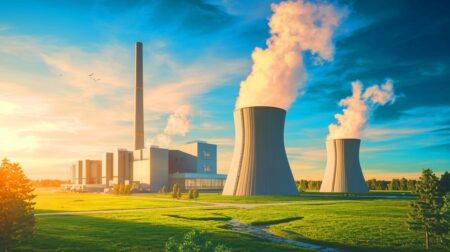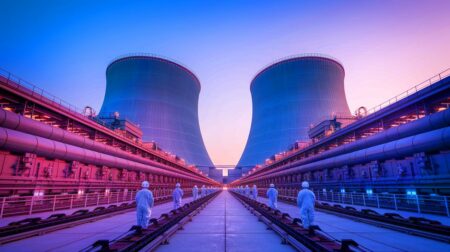| IN A NUTSHELL |
|
In an ambitious leap towards interplanetary sustainability, Honda is pioneering a renewable energy system designed to power life on the Moon. This groundbreaking initiative aims to harness solar energy and water from the Moon’s surface to provide essential resources such as electricity and breathable oxygen. With the potential to revolutionize how humans inhabit extraterrestrial environments, Honda’s project could serve as a cornerstone for the future of space colonization. This article delves into the innovative technology, its testing plans aboard the International Space Station, and the collaborative efforts propelling Honda’s lunar mission forward.
Turning Moon’s Resources into Sustainable Energy
At the heart of Honda’s celestial ambitions lies its high-differential pressure water electrolysis system, a crucial component of their circulative renewable energy system. This pioneering technology is designed to continuously produce hydrogen, oxygen, and electricity, essentials for sustaining life in the Moon’s harsh environment. During lunar daylight, the system utilizes solar energy to power the electrolysis process, splitting water into hydrogen and oxygen. This water, thought to exist in some lunar soils, becomes the primary resource for sustaining human life.
The real innovation emerges during the Moon’s lengthy night, a period devoid of sunlight. Here, Honda’s regenerative fuel cell system takes center stage, using stored hydrogen and oxygen to produce electricity, while reserving some oxygen for human respiration. As a byproduct, water is generated and recycled back into the electrolysis loop, creating an efficient, clean, and scalable closed-cycle system. This closed-loop design promises not only to sustain life on the lunar surface but also offers potential applications on Earth, heralding a new era of renewable energy technology.
Testing the System in Microgravity
To ensure the feasibility of this system beyond Earth’s gravitational confines, Honda plans to conduct tests aboard the International Space Station. This phase aims to scrutinize both the efficiency and reliability of the electrolysis system in a microgravity environment. The lightweight and compact design of the system makes it particularly suitable for space missions, where minimizing launch weight and maintenance requirements is paramount.
In this venture, Honda collaborates with Sierra Space and Tec-Masters. Sierra Space, known for its Dream Chaser® spaceplane, will manage transportation, while Tec-Masters lends its expertise in ISS technology. Honda envisions this project as a step towards a regenerative fuel cell system capable of supporting human life on the Moon, marking a significant milestone in the quest for sustainable space exploration.
Expanding Space Ambitions Through US Collaboration
Honda’s aspirations in space exploration received a significant boost with the establishment of its Space Development Division at American Honda in late 2024. This strategic move aims to foster collaboration with U.S. space entities like NASA, aligning efforts for lunar missions under the Artemis program. This U.S.-led initiative, with Japan as a key partner, seeks to realize the dream of sustainable human presence on the Moon.
The collaboration between Honda’s U.S. and Japan teams exemplifies a commitment to leveraging core technologies for extraterrestrial applications. As the global race to establish a human foothold on the Moon intensifies, Honda’s fuel cell system stands out as a crucial element in transforming science fiction into scientific achievement. By demonstrating its dedication to a sustainable future through cutting-edge technology, Honda positions itself at the forefront of this new frontier in space exploration.
The Future of Lunar Colonization
As Honda advances its lunar project, it not only contributes to the immediate goals of space exploration but also paves the way for future lunar colonization. The ability to generate essential resources like oxygen and electricity on-site reduces dependency on Earth, making long-term habitation feasible. This technological leap could redefine humanity’s approach to extraterrestrial living, offering a blueprint for settlements on Mars and beyond.
However, the broader implications of Honda’s innovation extend beyond space. The closed-cycle system’s potential applications on Earth could revolutionize renewable energy practices, providing a clean and sustainable alternative to fossil fuels. As the world grapples with climate change, such innovations offer a glimmer of hope for a greener future. Will Honda’s lunar endeavors inspire a new age of sustainable technology, both in space and on Earth?
Did you like it? 4.4/5 (28)









Wow, Honda on the Moon! 🚀 Who would’ve thought?
Is this tech gonna be available on Earth too? Seems like a game-changer!
Sounds interesting, but how will they get the water from lunar soil? 🤔
Thank you for shedding light on Honda’s space ambitions. Truly visionary!
I hope they don’t forget to bring a spare tire for the lunar rover. 😂
This sounds like science fiction! Can’t wait to see it in action.
How does this compare to other systems like NASA’s or SpaceX’s?
Honda is making huge strides! What’s next, Mars? 🏆
Will this technology help reduce our reliance on fossil fuels on Earth?
I’m skeptical. Can we really trust a car company with space technology?